Every month we have a huge list of garden jobs to get done that are very much dependent on the season and very unpredictable weather. April is no exception to this. In fact, April gardening jobs are some of the most interesting of the whole year.
In April the sun is supposed to start shining and the birds are meant to start chirping again. So it is therefore the perfect time for us to get into our gardens and start our preparations for summer.
Well, that’s how it’s meant to go anyway. More often than not our spring fantasies, unfortunately, do not become reality and we are subjected to weather that is seemingly out of character for the month (but very much in the character of the country).
And with this unpredictable weather comes more problems that need to be promptly addressed.
You can also see if you’re up to date on March gardening jobs and see if there is anything that you have not yet done.
Below we (Sutton Manor Nursery) have listed 10 garden jobs that you need to get done in April.
1 – It’s time to treat those problematic weeds that have become a nuisance over the winter months
The winter months are notoriously bad for the excessive overgrowth of nuisance and harmful weeds. This is mainly because a lot of people lack the motivation to keep on top of the maintenance of their gardens in such cold and miserable weather.
Weeds like nettles and brambles are notoriously problematic as they both compete with other more beautiful and useful plants for vital water and nutrients from the soil. So their growth can have a very negative impact on the growth of other, more useful plants.
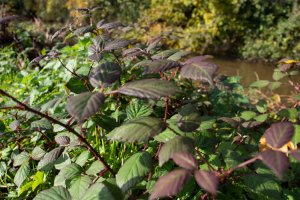
Bramble Plants 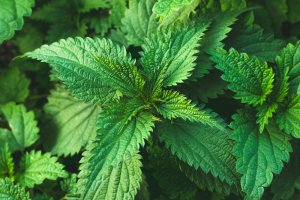
Nettle Plants
2 – Cut back old, browning fern fronds to make way for newer more vibrant new ones
Don’t let old, rotten and browning fern fronds front take centre stage in your outdoor area. Cut these eyesores back to allow for the growth of newer, more vibrant fronds that will allow your garden to adopt a more aesthetically pleasing look that you will be proud to unwind in, come the summer months.
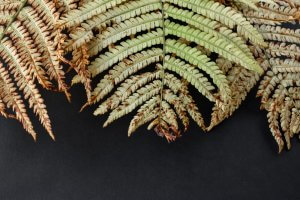
Browning Fern Fronds
3 – Cutaway any unwanted suckers that are growing around the base of trees and shrubs in your garden
Tree suckers are never a good sign, they traditionally stem from a tree or plant experiencing additional stresses like droughts, overwatering, diseases or pests that can be very harmful to its surrounding growths.
It’s extremely important to remove these suckers as soon as you possibly can. The sucker will zap all the energy from the healthier and more desirable branches further up the tree. Removing them will help to improve the overall health of any plants or trees that they have attached themselves to.
The removal process is very simple, cleanly cutting the tree sucker as close to the tree as possible. You should however leave the collar where the sucker meets the tree to help speed up the wound recovery of the tree. Performing this as soon as these pests occur will help to put less stress on the tree.
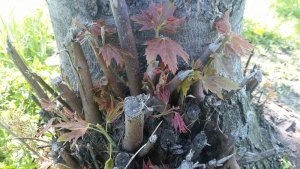
Tree Sucker
4 – Don’t forget to leave food out for the birds who are extremely busy raising their little broods
April means that birds’ nesting season is in full swing, and therefore the birds are super busy caring for and raising their broods. While this is not a necessary garden job to complete, birds play a vital role in the pest control of your garden and keeping away insects such as caterpillars and aphids that can be very harmful to plants within your garden. So it’s nice to look after the beautiful birds that help you to look after your garden.
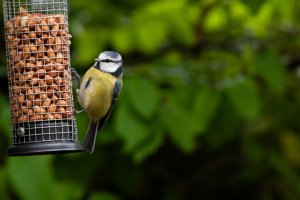
Bird Feeder
5 – Remove moss and weeds that have grown in your lawn and boost grass growth by feeding and aerating it
Moss and weeds can have detrimental impacts on your lawn. They will compete and normally outcompete your grass for water and nutrients causing it to become uneven and often spongy in areas.
Your lawn is such a focal point of your garden so it’s important to show it as much love and care as you possibly can. There are so many ways to remove moss and weeds from your garden, there are natural ways such as baking soda, dish soap, and vinegar or you can apply a pre-put together moss killer that will help to clear your lawn.
Once you have gotten rid of this nuisance you should then think about boosting the growth of your lawn with some lawn feed and tasks like aerating the grass and mowing your lawn on a weekly basis.
There are also so many more ways that you can make sure your garden is summer ready.
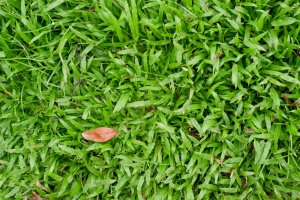
Lawn Weeds 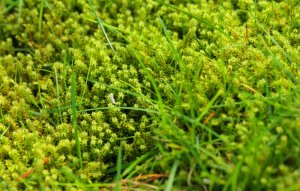
Lawn Moss
6 – Lay a new turf or sow grass seeds to create a new, more vibrant lawn or repair damaged patches
As we previously stated, your lawn is one of the main features of your garden. So making sure that it looks beautiful this April is a must. Laying a new turf is an easy way to instantly transform your outdoor area without having to breathe a new lease of life into a dying lawn. You can also sow grass seeds around your garden to prompt new growth that will help to bring your garden grass back to life.
Another option is to repair certain patches that are damaged. This can be done by cutting through the damaged patches, peeling back the turf, removing excess soil or adding new topsoil and then replacing the turf with newer, healthy turf.
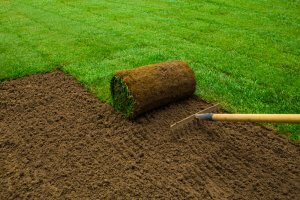
Laying Turf
7 – Get rid of any slugs and snails that will become a nuisance in your garden over the summer
Both slugs and snails can become a huge problem in your garden, for the feeding activity they seek out new plant growth. This can be a huge problem, especially in spring months like April when we are planting a variety of new and beautiful plants.
Not only do they love to cause catastrophic damage to new growths, what people are more unaware of is the damage that they cause to things like plant roots, stems and even fruits. So it’s clear to see why it would be beneficial to you to get rid of these.
There are so many different ways to get rid of slugs, naturally and using chemicals. We would always advise you to go with the more natural route at first and then resort to the chemical solutions if all else fails. The most natural way to deter snails and slugs would be to use plants that act as natural pesticides. Plants that have this ability include wormwood, rue, fennel, anise and rosemary.
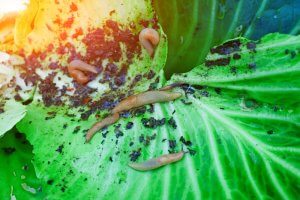
Slugs Feeding On Leaves
8 – Maintain good plant hygiene by getting rid of any dead leaves or faded blooms that fungal diseases could take hold of
Simply checking on your plants and getting rid of any dead leaves or faded blooms is such a simple job, yet the implications if you neglect this can be catastrophic. Harmful fungal diseases find it easier to take hold of plants that are not hygienically maintained such as dead and browning leaves. Fungal pathogens are hugely harmful to your garden as in very serious cases they can cause dead plants as they cause an accumulation of toxins within the plant.
Here are a few tips to maintain plant hygiene:
- Remove any diseased material on plants
- Bury removed diseased materials away from your plants
- Keep on top of cleaning your tools
- Keep plant cut back to allow for breathing room

Dead Leaves 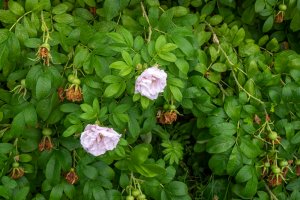
Faded Blooms
9 – April is the perfect time to plant produce like Broad beans, broccoli, carrots, cabbage and many more
With the ground starting to warm up and daylight savings becoming more apparent, April truly is the perfect month to think about the sowing of seeds for them to be at peak bloom in the summer months.
Take advantage of these and the undeniable April showers and get your soft fruit and vegetables planted as soon as you possibly can. So you will have lots of organic, homegrown produce to indulge in over the summer months.
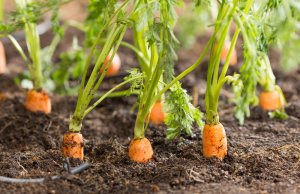
Vegetable Plants 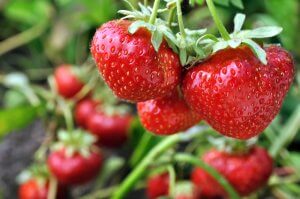
Soft Fruit Plants
10 – Protect young plants from late frosts by having a sheet of fleece on hand to cover them
While April would traditionally mean that morning frosts are behind us, so far this month we have been proven to be naive for thinking this.
Late frosts can catch many gardeners off guard completely, so it’s up to you to make sure that you are not one of these. Keeping a large sheet of fleece handy to cover these young plants when late frosts are forecasted could save your plants from hugely devastating consequences.
Frost can actually be extremely dangerous to young plants. This is because the water inside the plant actually expands once frozen. This is catastrophic to plants as it breaks the cell wall meaning that it can no longer carry the plant’s sap, resulting in the death of the plant.
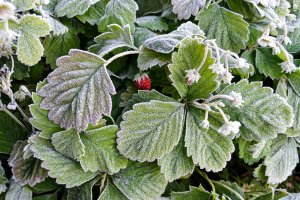
Frozen Strawberry Plant





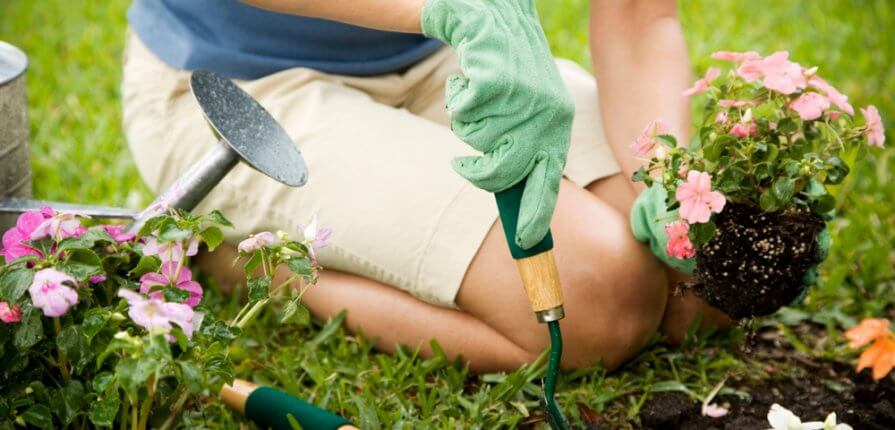



Recent Comments